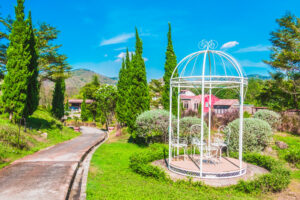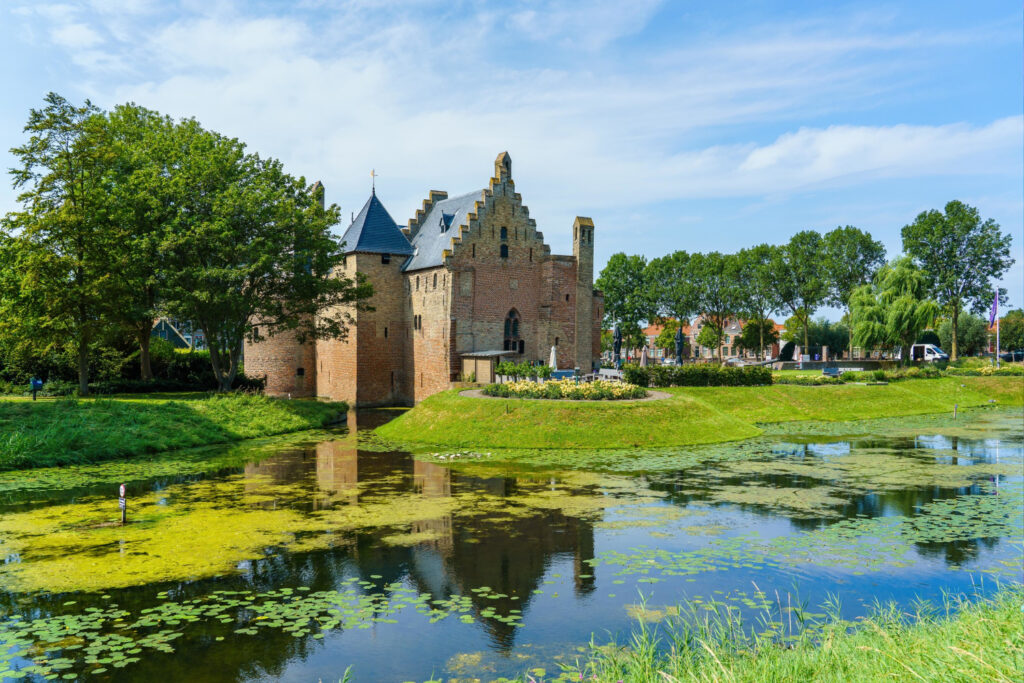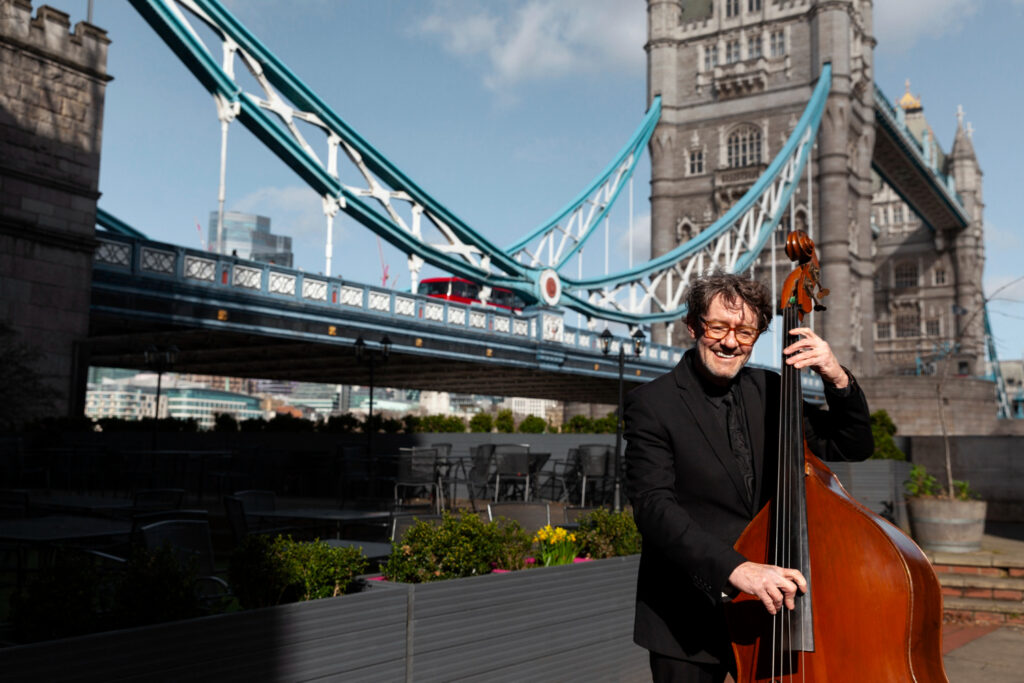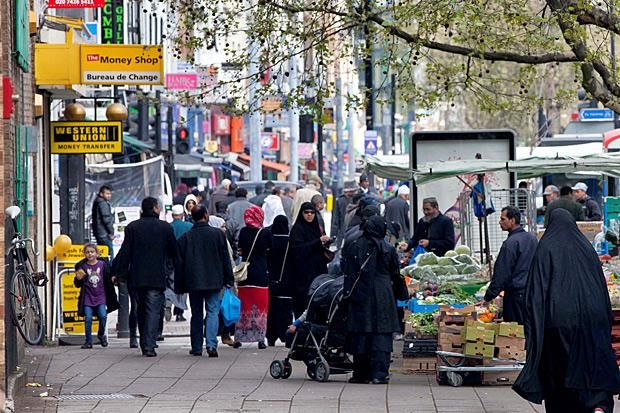Introduction: A Warm Welcome to Lichfield
Tucked in the heart of Staffordshire, Lichfield is a city that feels both timeless and alive. It’s one of those rare places where centuries-old architecture stands shoulder to shoulder with vibrant cafés, bustling markets, and the soft hum of daily life. Though modest in size, its influence in English history is anything but small.
Lichfield grew around its magnificent cathedral—one of the most striking in the country—and has long been known as a city of culture, intellect, and character. Famous figures like Samuel Johnson, the author of the first comprehensive English dictionary, once walked its streets, leaving behind stories that still echo through cobblestone lanes and Georgian squares.
Today, Lichfield blends its historic beauty with modern comfort. Independent shops, riverside walks, and a lively arts scene create a community that honors its heritage while embracing the present. Whether you come for its history, its friendliness, or its pace of life, Lichfield invites you to linger a little longer—because there’s always another charming corner waiting to be discovered.
The Heart of History: Lichfield’s Storied Past
Lichfield’s story begins long before its graceful cathedral rose above the treetops of Staffordshire. Its name is believed to originate from the Old English term Licetfeld, meaning “field of the dead,” possibly referring to early Christian martyrs who were said to have perished here. While the legend’s accuracy is debated, it captures the sense of reverence that has always surrounded this ancient settlement.
By the 7th century, Lichfield had already become a significant center of early Christianity. St. Chad, who served as the first Bishop of Mercia, established his cathedral here around 669 AD, turning the area into a religious and cultural hub. From that moment, Lichfield’s spiritual importance grew, shaping both its identity and its skyline for generations to come.
Throughout the Middle Ages, the city flourished as a place of learning, trade, and pilgrimage. The construction of the three-spired Lichfield Cathedral—unique in England—began in the 12th century and quickly became a beacon of craftsmanship and faith. Its architecture reflects both the artistic ambition of its age and the enduring devotion of the community that built it.
The English Civil War in the 17th century left its mark, quite literally, on the cathedral’s walls, which still bear traces of battle damage from sieges that turned sacred ground into a fortress. Yet, from those turbulent years, Lichfield rebuilt with vigor, and by the Georgian era it had transformed into a lively intellectual center.
Writers, clergy, and reformers shaped the city’s character during this time. Dr. Samuel Johnson, Lichfield’s most celebrated son, was born here in 1709, and his influence still lingers in the city’s proud literary tradition. Georgian houses, elegant gardens, and quiet squares remain as elegant reminders of that flourishing period.
Every epoch left a brushstroke on Lichfield’s canvas—from its medieval faith to its Enlightenment intellect—creating a city that never lost sight of its roots even as it evolved. Its past isn’t just preserved in stone and statues; it’s felt in the calm rhythm of the streets, where history doesn’t whisper—it speaks clearly, and kindly, to all who visit.
Architectural Treasures That Define Lichfield
The first glimpse of Lichfield’s skyline usually inspires a moment of quiet admiration. Rising gracefully above the city’s rooftops are the three spires of Lichfield Cathedral—a landmark so distinctive that locals affectionately call it “The Ladies of the Vale.” Built largely between the 12th and 14th centuries, this Gothic masterpiece remains the only medieval English cathedral with three spires, lending the city an instantly recognizable silhouette.
The cathedral’s design captures centuries of craftsmanship and devotion. Its sandstone walls are adorned with more than a hundred intricately carved statues, while its stained‑glass windows tell vivid biblical stories that transform sunlight into colored serenity. As the spiritual heart of the city, the cathedral is not just a place of worship but also a focal point for music, art, and local gatherings. The rhythms of daily life in Lichfield often seem to flow outward from this sacred center, linking the modern city to its ancient soul.
Beyond the cathedral, Lichfield overflows with architectural gems that reflect different eras of English design. The Bishop’s Palace, standing nearby, showcases dignified Georgian elegance, a testament to the city’s ecclesiastical prestige. Samuel Johnson’s Birthplace Museum, a fine example of early‑18th‑century town architecture, invites visitors to step back into the domestic world of one of Britain’s great literary minds.
Wandering through Market Square, one encounters a blend of timber‑framed merchants’ houses and neat Georgian façades. Each building tells a different part of Lichfield’s story—from its medieval prosperity to its Enlightenment‑era refinement. Strolling further afield reveals delights such as Erasmus Darwin House, once home to the pioneering scientist and grandfather of Charles Darwin, whose discoveries were as forward‑thinking as the design of his house and gardens.
Together, these landmarks reveal why Lichfield feels less like a city frozen in time and more like one that carries its history proudly within its walls. The architecture is not an exhibition of the past but a living dialogue between centuries, where stone and story intertwine to give Lichfield its enduring charm and unmistakable identity.
Exploring Lichfield’s City Life Today
Life in Lichfield has a distinct rhythm — lively yet unhurried, modern yet deeply grounded in tradition. The city’s atmosphere is one of comfortable confidence: it knows it has an extraordinary history, but it never relies on that alone to impress. Strolling through its streets, you’ll find that history still frames the view, but the experience feels refreshingly contemporary.
The markets at the heart of the city remain a living link between past and present. Held in Market Square, these gatherings have taken place since medieval times, yet today’s stalls display a cheerful mix of artisan bread, handmade jewelry, local produce, and global street food. The friendly chatter of vendors feels timeless — the kind of everyday community warmth that defines Lichfield’s personality.
When it comes to dining, the city surprises visitors with variety and depth. Elegant bistros and independent cafés share space with character-filled traditional pubs, many tucked into centuries-old buildings with beams that have seen generations come and go. Seasonal menus often showcase local Staffordshire ingredients, while modern eateries bring creative twists that attract a younger, cosmopolitan crowd.
Boutique shopping in Lichfield has its own charm too. Around streets such as Dam Street and Bore Street, small independent stores stand alongside stylish fashion boutiques, antique shops, and art galleries. The experience feels personal and relaxed — shopping as it was meant to be, unhurried and full of discovery.
Modern developments have been thoughtfully woven into Lichfield’s historic fabric. The Lichfield Garrick Theatre, for example, reflects this blend perfectly: a contemporary venue hosting plays, concerts, and community events, set amid old-world surroundings. New residential areas and business quarters respect the city’s scale and aesthetic, ensuring that progress never overpowers character.
What makes Lichfield special today is this graceful coexistence — a city content in its balance between heritage and innovation. Every cobblestone seems to nod toward tradition, even as new ventures, art exhibitions, and festivals point confidently toward the future. It’s a modern English city that manages the rare feat of evolving without ever losing its sense of self.
Parks, Gardens, and Outdoor Spaces Around Lichfield

For a city known for its cathedral and cobbled charm, Lichfield also boasts a surprising abundance of open space. The balance between natural calm and urban life is one of its quiet strengths — here, you’re rarely more than a few minutes’ walk from somewhere green, peaceful, and refreshingly unpretentious.
At the heart of it all is Beacon Park, a beautifully maintained expanse of lawns, gardens, and tree‑lined paths stretching across nearly seventy acres. It’s a meeting place for all ages: joggers trace their daily routes past ornamental beds, families picnic by the pond, and children burst into fits of laughter from the playgrounds. The park’s Victorian bandstand still hosts concerts through the warmer months, maintaining a tradition that feels charmingly timeless.
Closely intertwined with Beacon Park are Minster Pool and Stowe Pool, two tranquil bodies of water that add a touch of elegance to the cityscape. Both originated from medieval reservoirs but have become beloved recreational spots. A walk around Stowe Pool at sunset rewards you with one of Lichfield’s prettiest views — the cathedral’s spires mirrored in the water, a perfect postcard moment that never feels staged.
For those who prefer longer walks, the countryside surrounding Lichfield offers scenic routes through canals, woodlands, and open fields. The Staffordshire Way passes nearby, connecting ramblers to miles of well‑marked trails, while Chasewater Country Park, a short drive away, offers wide open skies and abundant birdlife for nature enthusiasts.
These spaces aren’t just pleasant backdrops; they’re living parts of the community. Seasonal events breathe life into the greenery — spring fairs with food stalls and crafts, summer concerts, charity runs, and open‑air theatre nights under the stars. Even in winter, the city’s Christmas lights reflect across the frozen pools, and Beacon Park hosts festive markets that fill the air with spice and laughter.
Lichfield’s green retreats remind residents and visitors alike that a city doesn’t need to be vast to feel generous. With every path, pond, and park bench, Lichfield extends an open invitation: slow your step, breathe a little deeper, and enjoy the artful simplicity of nature woven into city life.
Lichfield’s Cultural Beat: Festivals, Music, and Community

If the cathedral forms Lichfield’s architectural heartbeat, its festivals and gatherings provide the city’s lively pulse. Culture here isn’t confined to museums or quiet galleries—it spills into the streets, parks, and performance halls, carried by the enthusiasm of locals who treat every event as a celebration of shared identity.
Throughout the year, annual festivals highlight Lichfield’s creative spirit. The Lichfield Festival, held each summer, transforms the city into a stage for drama, literature, classical music, and contemporary art. Concerts fill the cathedral’s lofty nave with echoing harmonies, while outdoor performances and workshops invite people to take part rather than simply watch. The Lichfield Fuse Festival, an energetic mix of live music and street performance, brings a different rhythm entirely—one that resonates with younger audiences and never fails to draw a cheerful crowd.
Beyond the major events, countless smaller gatherings sustain community pride. Heritage Open Days unlock doors to some of Lichfield’s oldest and most fascinating buildings, allowing residents and visitors alike to trace the city’s layers of history. Throughout the autumn and winter, local markets and fairs blend creativity with tradition—handcrafted gifts, storytelling sessions, and lantern parades that glow warmly against the evening chill.
Music also holds a steady place in Lichfield’s social calendar. The Lichfield Garrick Theatre offers everything from regional productions to national tours, while choirs and local bands keep the city’s evenings filled with sound. Even pubs and cafés play their part, hosting acoustic sessions and spoken‑word nights that encourage up‑and‑coming talent.
What gives these events their distinct charm is the way community connection runs through them. Whether a centuries-old concert series or a spontaneous street performance, the focus is always on togetherness. Residents volunteer, local businesses lend support, and strangers often leave as friends.
Lichfield’s cultural life demonstrates that heritage isn’t something to be preserved in glass—it’s something to be lived. Every festival, parade, and shared song is a conversation between generations, linking those who once shaped the city to those who continue its story today.
Living in or Visiting Lichfield
Lichfield has mastered that rare balance between small‑city charm and practical convenience, making it equally appealing to long‑term residents and short‑term visitors. It’s a place where quality of life takes priority over fast pace—where Georgian façades meet friendly faces, and the sense of belonging arrives almost as quickly as the appreciation for its beauty.
For those who live in Lichfield, everyday life tends to feel manageable yet full of character. The city centre buzzes just enough to stay interesting without ever becoming overwhelming. Independent shops, local cafés, and weekly markets foster a genuine sense of community, while green spaces like Beacon Park and Stowe Pool offer easy escapes into calm. Schools maintain high standards, healthcare services are well‑regarded, and neighbourhoods are as walkable as they are picturesque. It’s the kind of place people stay in not because they must, but because they want to.
Visitors often find that exploring Lichfield is both effortless and rewarding. History buffs can spend hours tracing medieval roots in the cathedral quarter, while casual wanderers enjoy the scenic squares and relaxed riverside paths. Boutique shopping and refined dining create a leisurely rhythm, and cultural attractions such as the Samuel Johnson Birthplace Museum or the Lichfield Garrick Theatre add depth to even a short stay.
From a practical standpoint, transportation and accessibility further elevate the city’s appeal. Two railway stations—Lichfield City and Lichfield Trent Valley—connect directly to Birmingham, London, and other major destinations, making it ideal for commuters or day trippers. The nearby A38 and M6 Toll ensure smooth driving routes, while regular bus and cycle paths make local travel easy and eco‑friendly.
As for nearby attractions, the surrounding Staffordshire countryside offers abundant places to explore. The rolling landscape of Cannock Chase, the historic market town of Tamworth, and the serene Chasewater Country Park all sit within a short drive. Even world‑famous destinations like the Potteries or the Peak District are within comfortable reach.
Whether settling down or passing through, Lichfield’s appeal comes from its completeness: a city grounded in history yet vibrantly alive, offering the warmth of a village, the culture of a cathedral city, and the accessibility of a modern hub—all without losing the gentle charm that makes it unmistakably Lichfield.
Conclusion: The Enduring Allure of Lichfield
Lichfield is the kind of place that quietly grows on you—never demanding attention, yet leaving a lasting impression. Its strength lies in the way its many eras coexist so naturally: medieval towers beside Georgian townhouses, lively cafés under the shade of centuries‑old spires, and modern voices echoing through streets first laid by history’s hands.
For residents, that harmony becomes part of daily life, a reminder that progress and preservation can thrive side by side. For visitors, it’s an invitation to slow down and absorb a piece of England that still feels authentic and personal. From the soft hum of its markets to the quiet grandeur of its cathedral, Lichfield embodies balance—between old and new, tradition and creativity, serenity and vitality.
In the end, what makes Lichfield timeless isn’t just its architecture or its green spaces; it’s the spirit of belonging that threads through it all. The city has evolved gracefully, carrying its past like a cherished story still being written. And whether you come for a weekend or a lifetime, Lichfield has a way of reminding you that history isn’t just something to visit—it’s something to live alongside.




